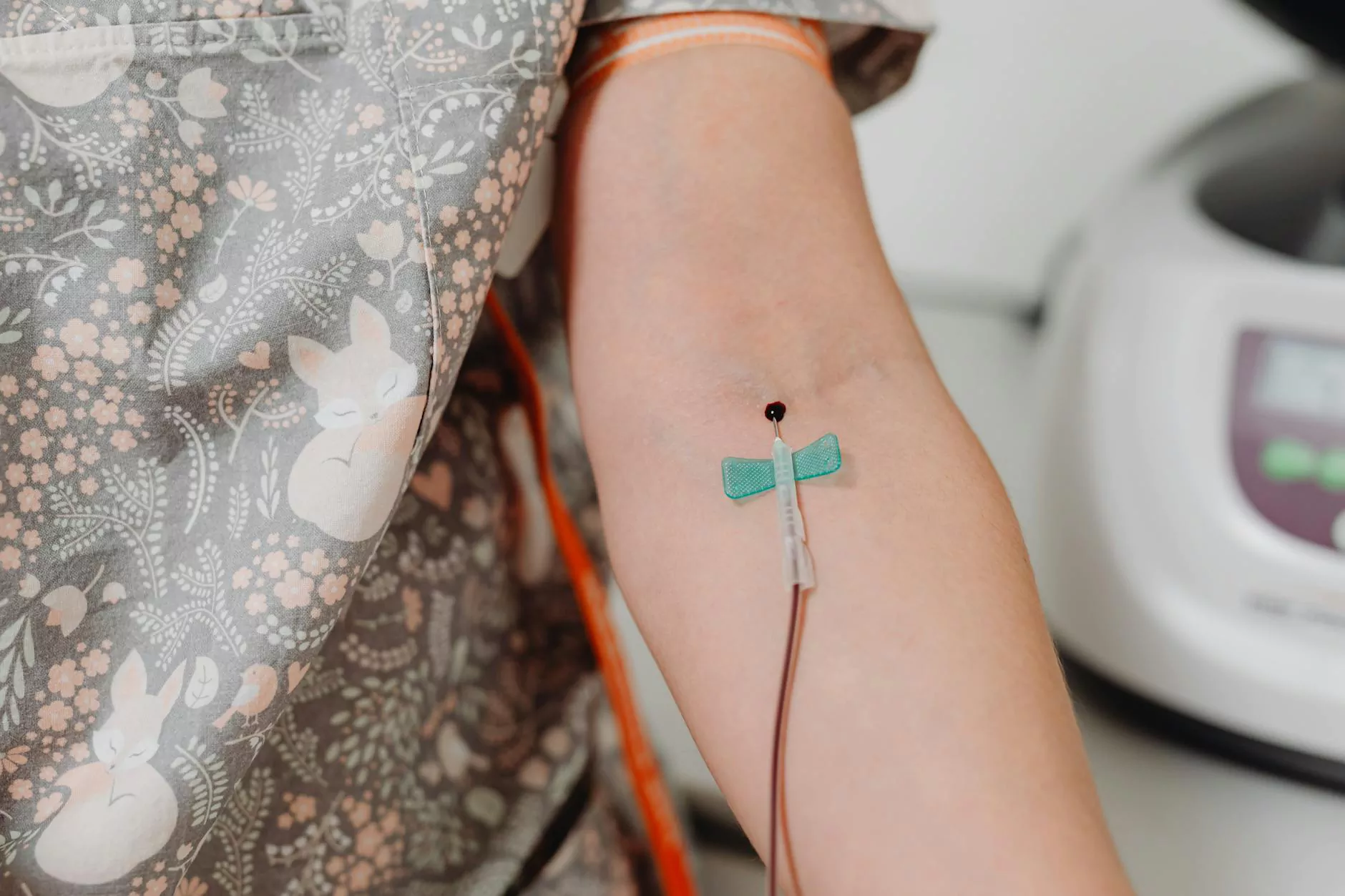Understanding Chronic Venous Stasis: Causes, Symptoms, and Treatments

Chronic venous stasis is a condition that reflects the complexities of our vascular system and its critical role in maintaining overall health. As individuals, understanding chronic venous stasis can empower us to take proactive measures in managing our health and seeking the necessary medical interventions. This article delves into chronic venous stasis, its implications, and the multifaceted approaches to treatment.
What is Chronic Venous Stasis?
Chronic venous stasis refers to the inefficiency of blood circulation in the veins, particularly in the lower extremities. This condition occurs when the veins struggle to return blood back to the heart, resulting in blood pooling in the legs. Over time, this can lead to significant complications, including pain, swelling, skin changes, and ulcerations. Understanding this condition is crucial for prevention and treatment.
Causes of Chronic Venous Stasis
Several factors contribute to the development of chronic venous stasis. Here are some of the most common causes:
- Venous Insufficiency: This occurs when the valves within the veins fail to function effectively, allowing blood to flow backward and pool in the veins.
- Deep Vein Thrombosis (DVT): A blood clot that forms in a deep vein can obstruct blood flow and contribute to chronic venous stasis.
- Age: As individuals age, the elasticity of the veins diminishes, making them more susceptible to stasis.
- Obesity: Excess weight places additional pressure on the veins, increasing the risk of venous stasis.
- Prolonged Standing or Sitting: Occupations or lifestyles that require extended periods of immobility can worsen venous drainage.
- Genetics: A family history of venous problems can increase one’s risk of developing chronic venous stasis.
Symptoms of Chronic Venous Stasis
The symptoms of chronic venous stasis can range from mild to severe, often deteriorating over time. Recognizing these symptoms is vital for seeking timely medical attention. Common symptoms include:
- Pain and Discomfort: A feeling of heaviness or aching in the legs, particularly after long periods of standing or sitting.
- Swelling: Noticeable swelling in the ankles and lower legs.
- Skin Changes: Varicose veins, discoloration of the skin (usually a brownish pigmentation), and texture changes may occur.
- Leg Ulcers: Chronic venous stasis can lead to open sores that are difficult to heal, typically found around the ankles.
- Itching and Tingling: Sensations of tightness or itching on the skin can indicate underlying venous issues.
Diagnosis of Chronic Venous Stasis
Diagnostic procedures are crucial in accurately identifying chronic venous stasis and determining the best course of action. Common diagnostic methods include:
- Physical Examination: A thorough examination by a healthcare professional can reveal the presence of swelling, ulcers, or skin changes.
- Duplex Ultrasound: This imaging test helps visualize blood flow and identify any blockages or reflux in the veins.
- Venography: A more invasive procedure where a contrast dye is injected into the vein, allowing for X-ray imaging of the venous system.
Treatment Options for Chronic Venous Stasis
Managing chronic venous stasis involves a combination of lifestyle changes, medical treatment, and, in some cases, surgical interventions. The following treatment options are commonly considered:
Lifestyle Modifications
Before delving into more invasive treatments, healthcare providers typically recommend lifestyle changes, including:
- Weight Management: Losing excess weight can relieve pressure on the veins.
- Regular Exercise: Activities such as walking, swimming, and cycling promote healthy circulation.
- Leg Elevation: Elevating the legs when resting can help reduce swelling.
- Avoiding Prolonged Sitting or Standing: Frequent breaks during long periods of immobility can enhance blood circulation.
Compression Therapy
Compression stockings are often prescribed to patients with chronic venous stasis. These stockings apply graduated pressure to the legs, promoting venous return and reducing swelling. Types of compression therapy include:
- Graduated Compression Stockings: These are designed to provide higher pressure at the ankle, gradually decreasing up the leg.
- Elastic Bandages: In some cases, elastic bandages can be used to provide support and reduce swelling.
Medications
Various medications may help manage the symptoms and complications associated with chronic venous stasis:
- Venoactive Drugs: These medications improve venous tone and reduce inflammation, which can alleviate symptoms.
- Topical Treatments: Creams and ointments can be applied to reduce itching, discomfort, and inflammation.
Surgical Procedures
In cases where conservative management is ineffective, surgical interventions may be necessary to correct the underlying venous insufficiency:
- Vein Ligation and Stripping: This procedure involves tying off and removing sections of damaged veins to improve blood flow.
- Endovenous Laser Treatment (EVLT): A minimally invasive procedure where lasers are used to close off affected veins.
- Ultrasound-Guided Sclerotherapy: A solution is injected into the affected veins, causing them to collapse and scar.
Prevention Strategies for Chronic Venous Stasis
Preventing chronic venous stasis requires a proactive approach to reducing risk factors and improving vascular health. Here are some effective prevention strategies:
- Stay Active: Regular physical activity strengthens the legs and promotes healthy blood flow.
- Wear Comfortable Shoes: Avoiding high heels and tight shoes can reduce pressure on the veins.
- Stay Hydrated: Good hydration helps maintain blood volume and flow.
- Avoid Smoking: Smoking can weaken vascular health and exacerbate venous issues.
The Role of Healthcare Professionals
As a patient, understanding chronic venous stasis and how it affects your health is vital for effective management. Healthcare professionals play a crucial role in this journey:
- Primary Care Physicians: They can provide initial evaluations and refer patients to specialists.
- Vascular Surgeons: Specialists in vascular issues can provide advanced treatments and interventions.
- Wound Care Specialists: For those with venous ulcers, specialized care is essential for healing.
Conclusion
Chronic venous stasis is a complex condition that necessitates a comprehensive understanding of its causes, symptoms, and treatment options. With the right knowledge and support, individuals can effectively manage this condition, improve their quality of life, and prevent complications. Always consult healthcare professionals for accurate diagnosis, tailored treatment plans, and ongoing management strategies. Remember, taking the first step toward awareness is a significant leap toward better vascular health.
For more personalized advice and treatment options, consider reaching out to specialized practitioners at trufflesveinspecialists.com, where expert care meets advanced medical solutions in the realm of vascular medicine.









